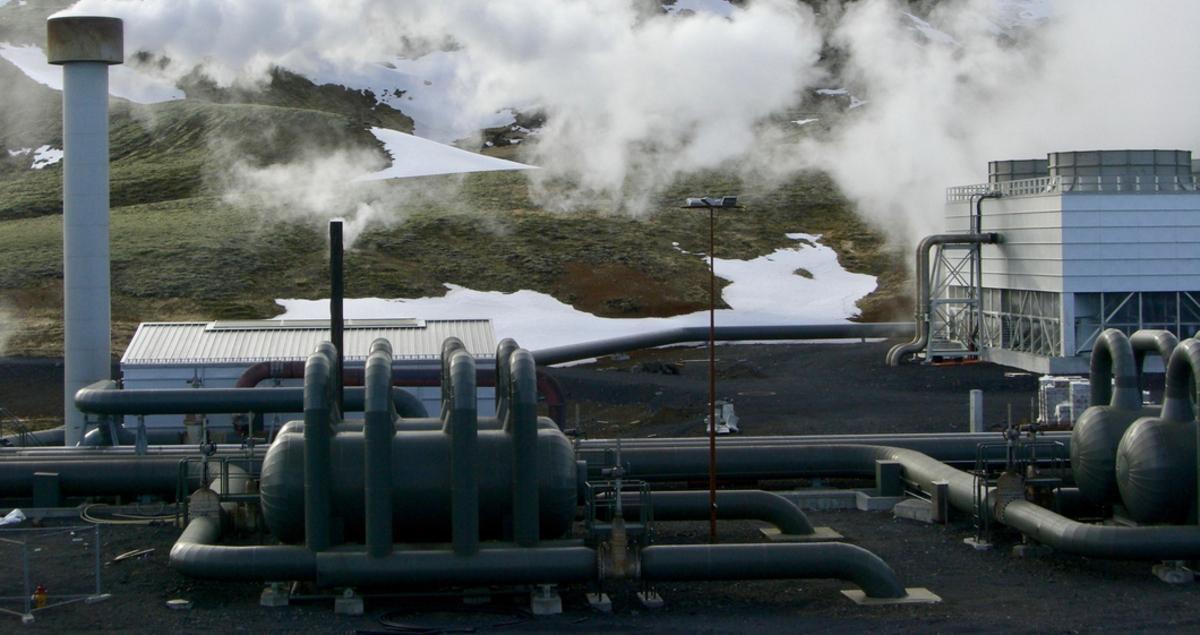Why the world needs hydrogen to help reach net zero

It is the most abundant element in the universe, and a key piece in solving the net zero puzzle.
Hydrogen gas emits only water when burned. This makes it ideal for tackling the CO₂ emissions of many vital economic activities ill-suited to renewable energy use, such as shipping, heating and heavy industrial processes like steelmaking.
And as well as being a source of energy on its own, hydrogen is set to play an invaluable role in energy storage. Unused renewable energy can be converted to hydrogen, stored until it is needed and then reverted to electricity on demand – at levels that far exceed those possible with alternatives such as lithium-ion batteries.
Batteries are well-suited to applications that require high responsiveness and fast charge and discharge capabilities. They are not an ideal option for storing large amounts of energy for long periods of time, which is where hydrogen comes in.
Its large-scale storage capacity can help balance grids struggling to accommodate ever-greater volumes of variable renewables like wind and solar. Excess electricity produced by renewables at times of low demand can power electrolysis to produce hydrogen, with the gas then stored to produce electricity when demand increases.
For all of these reasons and more, hydrogen’s status in the energy industry is now greater than ever. It is enjoying “unprecedented business and political momentum,” according to the International Energy Agency (IEA), with clean hydrogen use growing even across the hardest-to-abate sectors as production scales up and costs come down.
Of course, excess clean hydrogen will also find multiple applications in decarbonizing hard-to-abate sectors like cement, steel and chemicals.
Cleaner hydrogen
Hydrogen has historically been produced from fossil fuel sources, meaning there are CO₂ emissions in its production process. However, there is a global move toward the use of clean hydrogen production methods.
Cleaner hydrogen production methods include:
- Blue hydrogen – using carbon capture and storage to capture the emissions from traditional production – a method the EU, amongst others, considers critical to ramping-up production and building a hydrogen market;
- Turquoise hydrogen – using processes like pyrolysis and thermocatalysis to split natural gas into hydrogen and solid carbon, which has a range of industrial applications;
- Green hydrogen – using electricity from renewable sources to power the process of electrolysis, splitting water into hydrogen and oxygen.
In Texas, Mitsubishi Heavy Industries (MHI) Group is partnering in projects to demonstrate how green hydrogen can be a cost-effective fuel with multiple end uses, from transport to power generation. The projects will also show how effectively the production of green hydrogen can be expanded to develop future transportation and energy systems.
With the cost of green hydrogen production falling dramatically, it could be cost competitive by 2030. And as well as being a source of energy on its own, hydrogen plays an invaluable role in energy storage. Unused renewable energy can be converted to hydrogen, stored until it is needed and then reverted to electricity on demand.
This is a process that Mitsubishi Power* is already working on at the Advanced Clean Energy Storage Project in Utah, where green hydrogen is held in underground salt caverns for future use fueling a converted coal-fired power plant.
In Germany, partners in the Hamburg Hydrogen Network project see the conversion of a coal power plant into a 100-megawatt electrolysis plant for green hydrogen as the core of a regional hydrogen value chain, with a range of industrial off-takers.
The Hydrogen Council, a global partnership launched at the World Economic Forum in 2017, says hydrogen could enable the deployment of renewables by converting and storing more than 500 TWh of electricity. And with the cost of green hydrogen production falling dramatically, it could be cost-competitive with ‘gray’, fossil-derived production methods by 2030.
Hydrogen for heating
Heating domestic and commercial buildings is one of the biggest sources of CO₂ emissions. Hydrogen could help to offset this, particularly in countries like the UK, which currently relies on gas for 77% of its central heating.
Ahead of hosting the 2021 United Nations Climate Change Conference – COP26 – in November, the UK government has announced it will cut CO₂ emissions by 78% by 2035. Introducing hydrogen as a heat source will be critical to meeting that target. In a small town in Scotland, 300 homes will become the first in the world to be heated by 100% clean hydrogen by the end of 2022, with scope to widen the trial if successful.
In the Netherlands, meanwhile, a national study is already underway looking at how the existing gas grid can be adapted for transporting hydrogen, using specialist compressors such as those being developed by Mitsubishi Heavy Industries Compressor Corporation (MCO).
Shaving steel emissions
Another area in which hydrogen can play an innovative role is in reducing the carbon footprint of hard-to-abate sectors such as steel manufacturing. Steel production is responsible for around 8% of global carbon emissions, with worldwide demand continuing to grow.
There is already a project in Sweden developing fossil-free steel by using hydrogen instead of coal in the steelmaking process. The first shipment has been delivered to Volvo AB, but it won’t be available on an industrial scale until 2026. If successful, the initiative could cut Sweden’s emissions by 10%.
Primetals Technologies, part of MHI Group, is also using hydrogen to decarbonize industrial processes. Its Hyfor (hydrogen-based fine ore reduction) technology is being applied at a pilot plant in Austria. Because this approach uses hydrogen instead of carbon-based fuels like coal or natural gas, the result is a low or even zero CO₂ footprint without a reduction in steel quality.
Trains, planes and ships
While hydrogen is already contributing to the rollout of fuel-cell electric vehicles, its greatest mobility impact could be as an alternative fuel for heavy and long-distance transportation.
A report by McKinsey and the Hydrogen Council claims that hydrogen could be cost-competitive with diesel for trains, trucks, buses and even SUVs by 2030, with many of these hydrogen-powered modes already in use. Germany, for example, has used hydrogen-powered trains since 2018, while the University of Birmingham (UK) recently showcased the first dual-fuel, hydrogen and electricity powered train for mainline use at the COP26 summit in Glasgow.
Hydrogen-derived biofuels, meanwhile, have the potential to allow planes to fly for longer without any emissions.
And three years after the International Maritime Organization (IMO) pledged to halve shipping emissions by 2050, the shipping industry is counting on ammonia and methanol – both of which can be produced from hydrogen but are easier to transport – as low-carbon shipping fuels.
The main use for ammonia is currently as a raw material for the fertilizer industry, and Mitsubishi Shipbuilding has recently teamed up with Mitsui O.S.K. Lines and Namura Shipbuilding to jointly develop a large ammonia carrier, itself fueled by ammonia as an emissions-free propellant.
While growing the production capacity of clean hydrogen will take time, its potential to target some of the biggest sources of CO₂ means now is the time to take this mercurial element very seriously indeed.
Mitsubishi Power is a power solutions brand of Mitsubishi Heavy Industries.
Learn more about hydrogen’s role in meeting net zero





